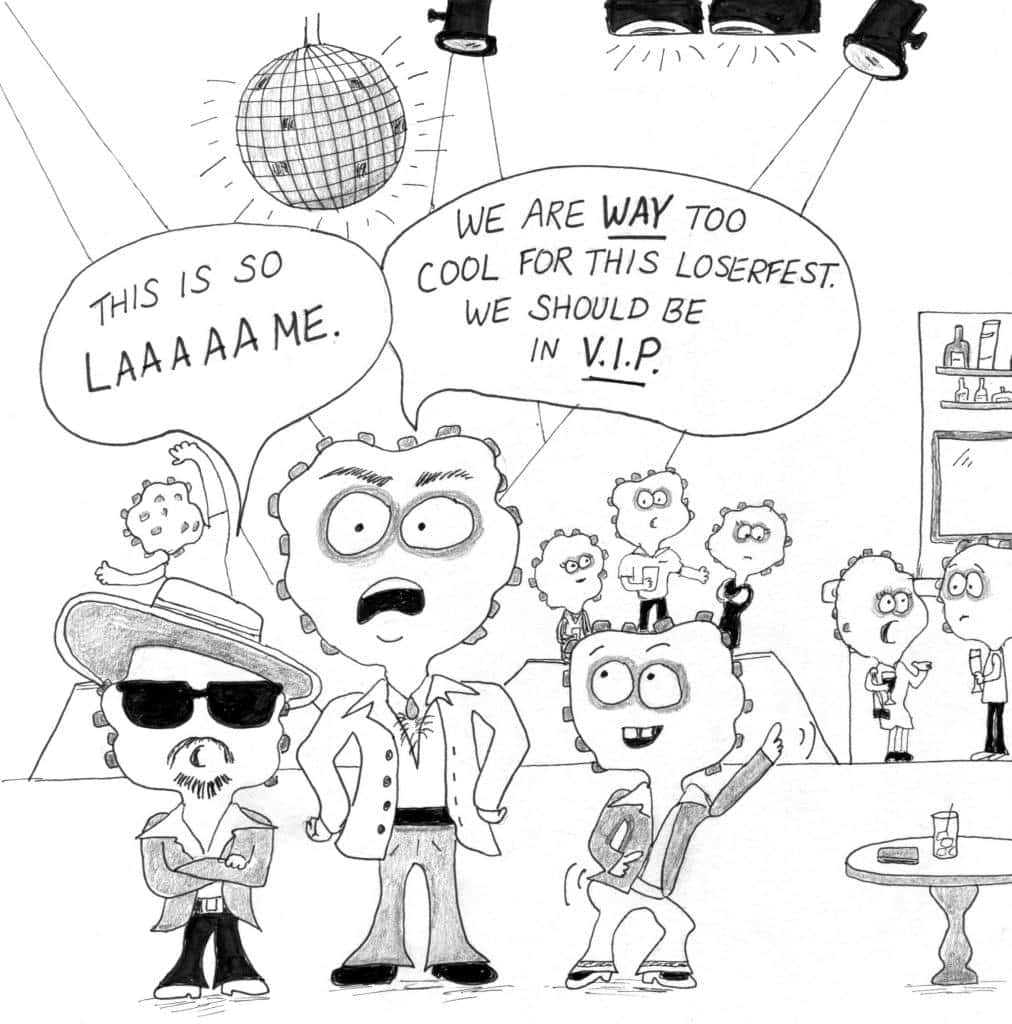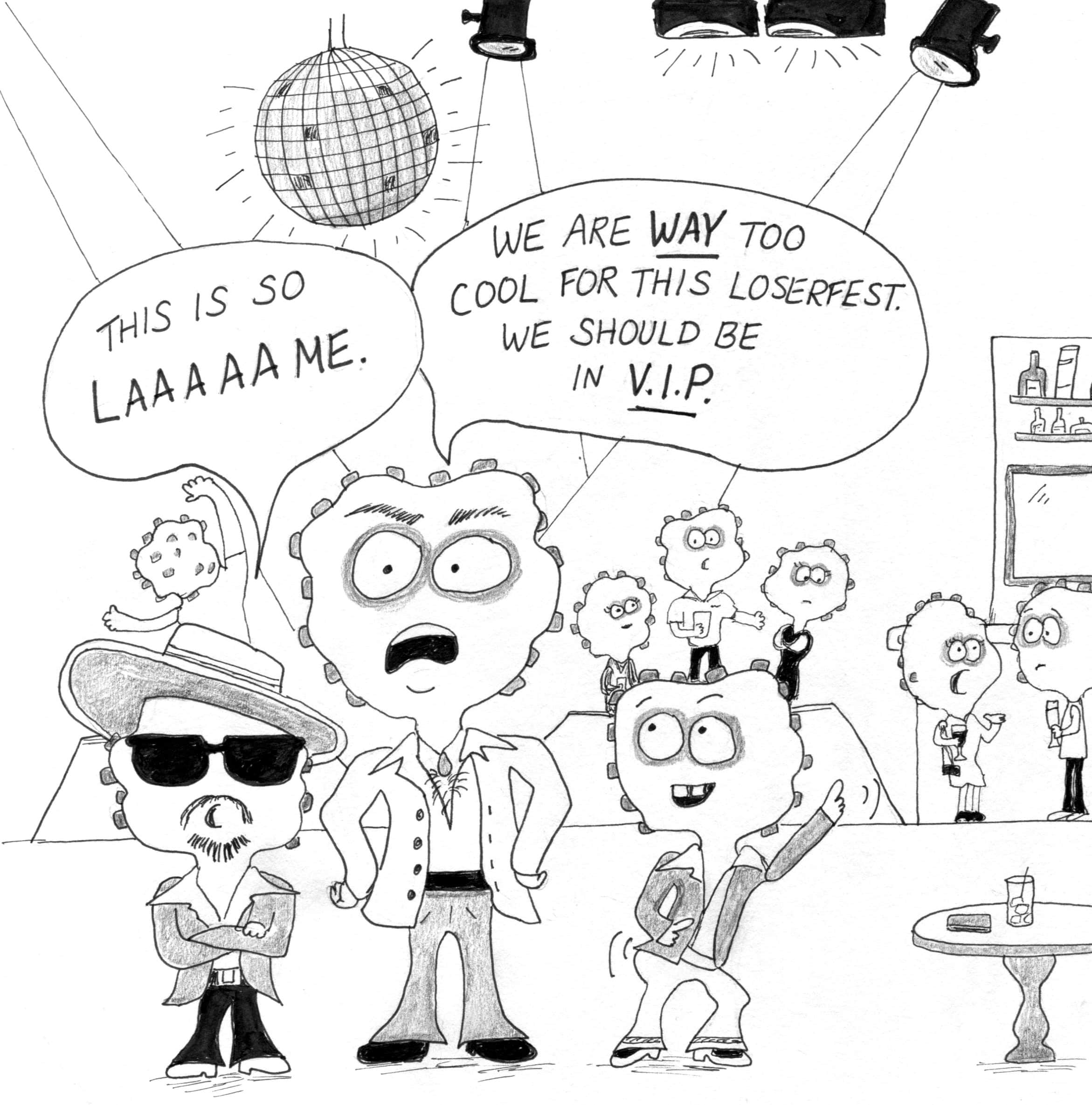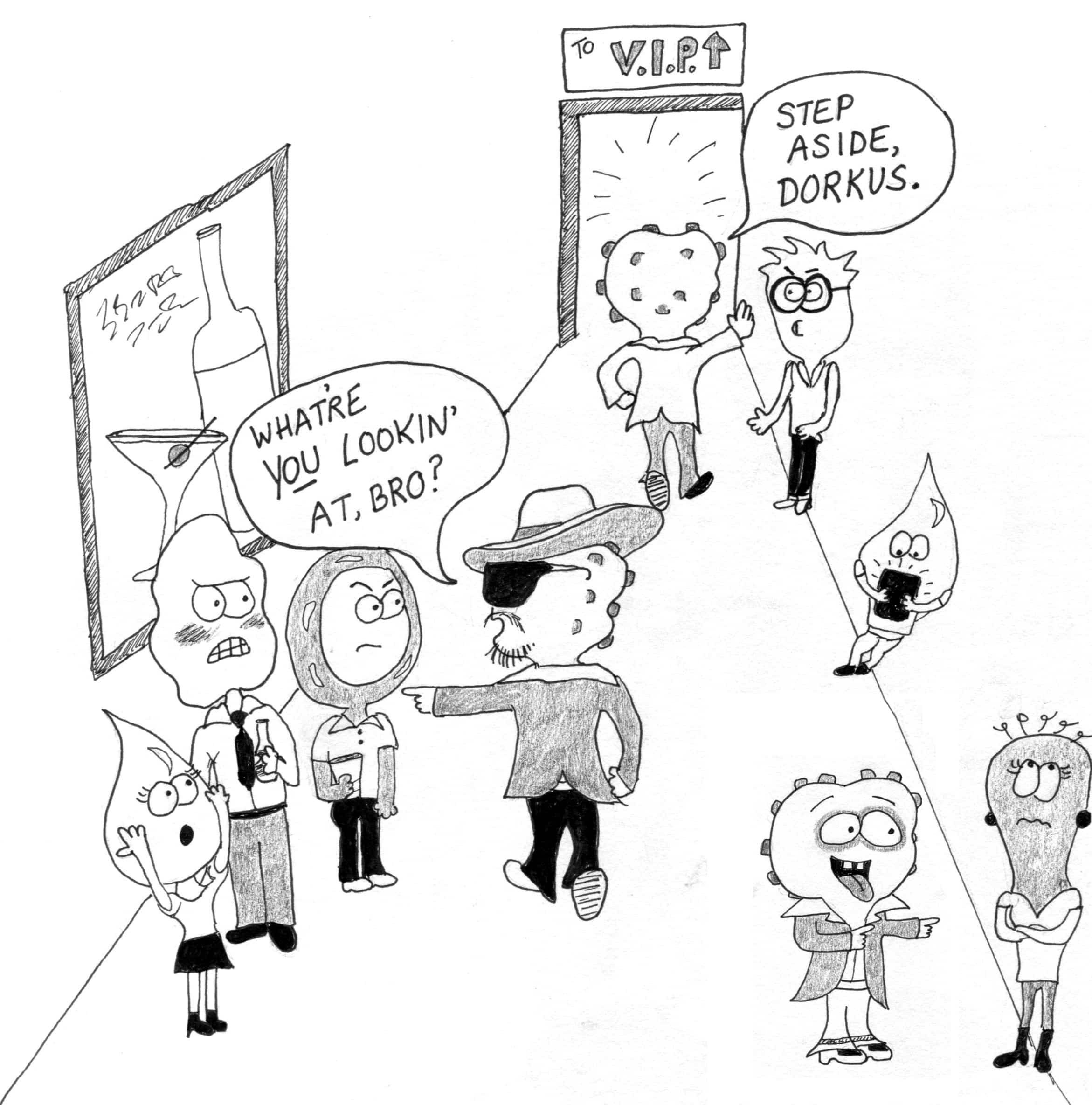A big thank-you to the folks at Healwell.org for reaching out and asking if I’d like to draw this one up. Check out all the great things they do in hospital and care setting massage here, donate to their work, and for those who want to learn more about metastasis and massage, they have an excellent online course (among many others) here.
Metastasis happens when cancer cells spread from where they started to other regions of the body. It’s a complex cellular process that typically plays out in a particular sequence, and Under Your Skin is here to help illustrate what goes on in the body and show how sneaky cancer cells try to bust out, travel elsewhere, and set up camp in a new spot.
STEP ONE: CELL SHED
Let’s think of the body as one giant nightclub. So here are the cancer cells starting out as part of the original tumor in one part of the club. They’ve been hanging out here a while, they’re surrounded by other cancer cells, and they’re getting bored and restless. They want to shed off of this tumor and go somewhere where they feel like there’s going to be more action.
STEP TWO: INTRAVASATION
The ambitious cancer cells make their way into a hallway (which would be a blood or lymph vessel), and start traveling toward their ideal destination. The other cells in those vessels can look at these guys and see that they don’t belong in there, but that’s not stopping our hip clubgoers from trying to get to the V.I.P. section.
STEP THREE: THE DANGEROUS JOURNEY
Except there might be some cells that CAN stop them. The immune system and its white blood cell bouncers are on duty in those blood and lymph vessels. And sometimes this works really well and the WBCs are able to boot the cancer cells right out of the club and eliminate them and the journey ends there for our ruffians.
STEP FOUR: EXTRAVASATION
But as we know, cancer cells are crafty, and sometimes they can fool the immune system. They can try to disguise themselves as other, nonthreatening cells, or they can blind the WBCs to their existence or distract them as they slide by, slipping out of the blood or lymph vessel and into nearby tissue.
STEP FIVE: TISSUE AFFINITY AND ANGIOGENESIS
And these guys don’t want to just relocate to any part of the club – they want to find “tissue affinity,” a place where they can survive, thrive, and proliferate. They’re looking for someplace comfortable where they can achieve angiogenesis – a state where they can create new vessels in their new spot to provide nutrients for themselves. They want to be lounging on comfy couches in the V.I.P. section and making sure the drinks keep flowing their way. And like our smooth operator on the couch here, cancer cells can also try to seduce neighboring healthy cells into eventually obtaining nutrients for them – or will just outright steal from them.
It’s important to reiterate that although this journey from one part of the club to the V.I.P. lounge makes it look like an easy foray from the original tumor to metastasis, it’s a very complicated, chemical, cellular-level process where many pieces have to fall into place and stars have to align a certain way, and cancer spread is not brought on by a mechanical force, like massage or exercise.
So yeah – as the folks at Healwell like to say, “cancer is fancy”. They’re all dressed up in leisure suits, scheming and being as sly as they can to get what they want. And in understanding the ways that cancer cells think and behave, the hope is that that can point us toward better therapies and treatments.
(And, no, Justin Bieber never did make an appearance. Nice try, guys.)






